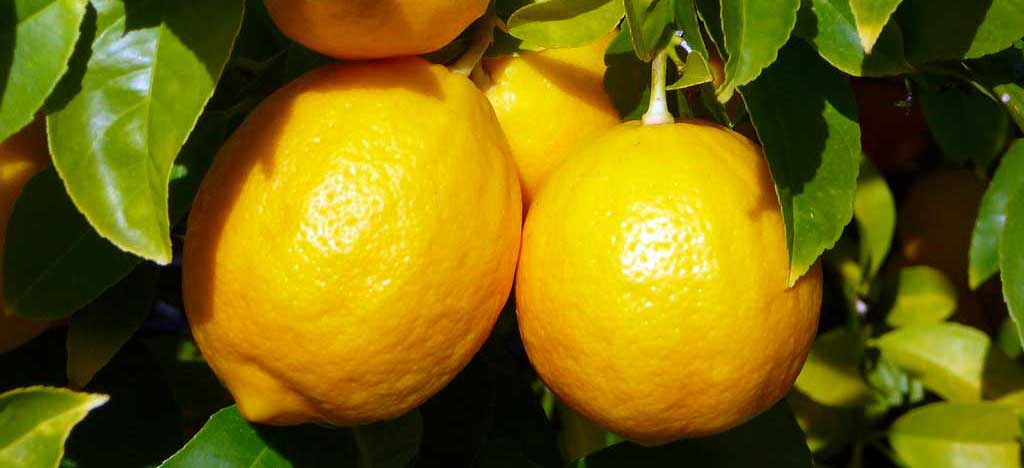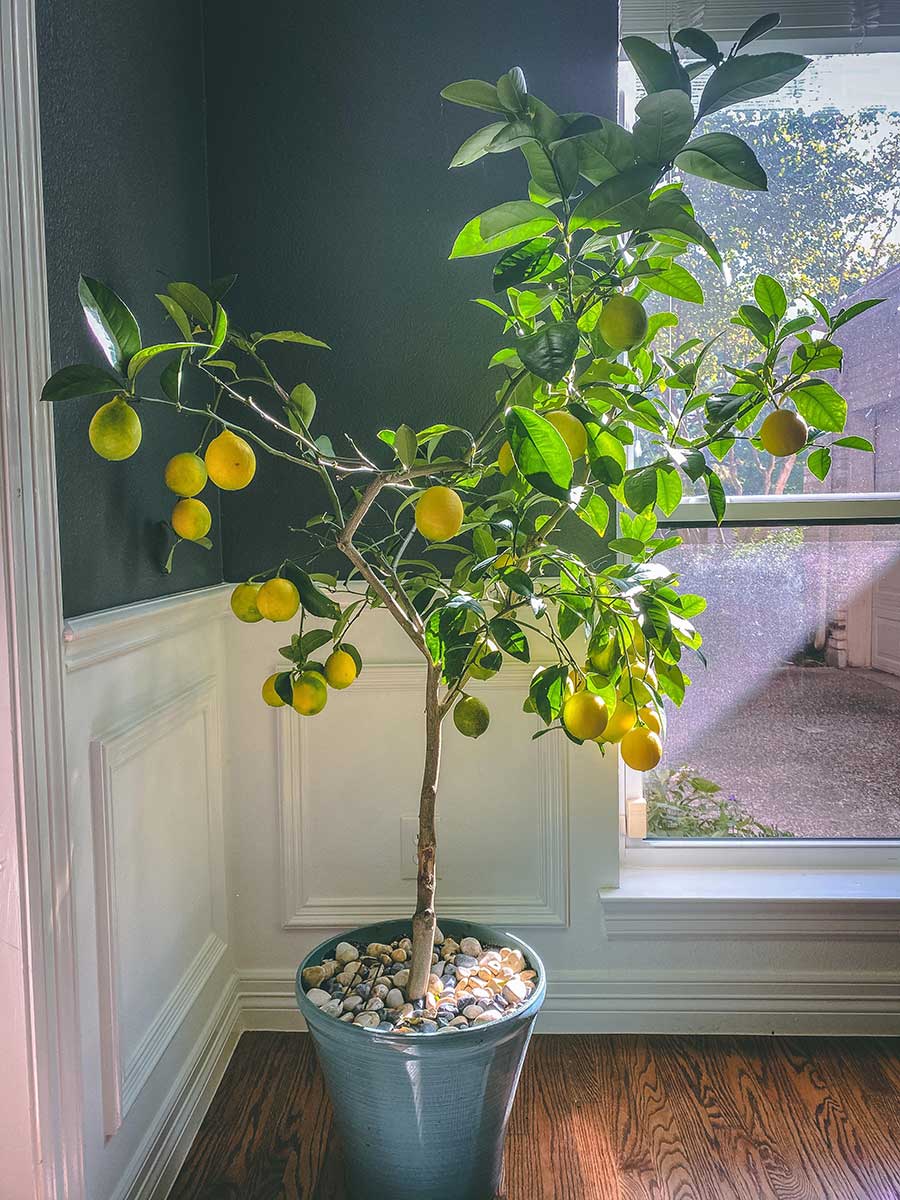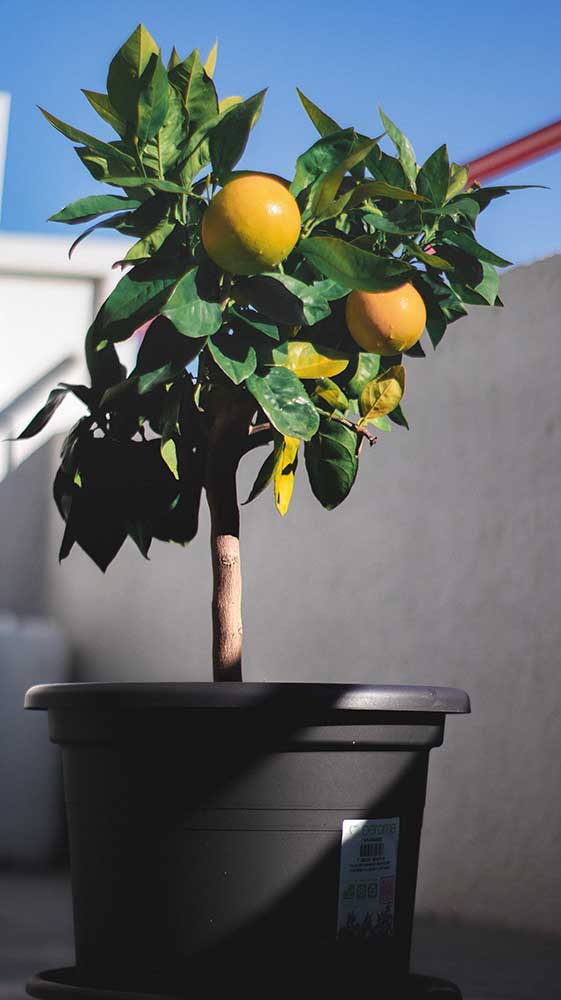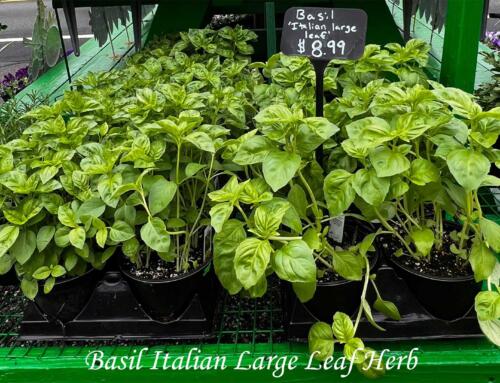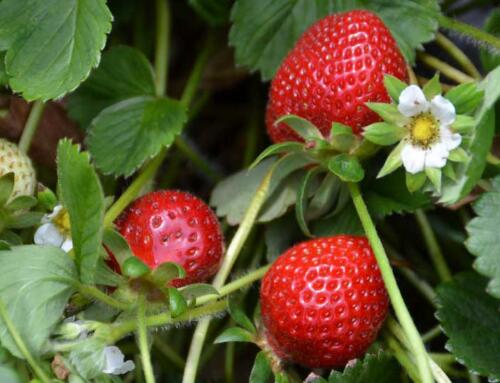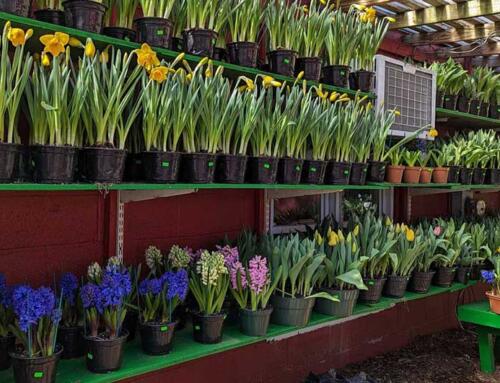Meyer Lemon Tree | “Citrus × meyeri“
available at Goffle Brook Farms
Meyer lemon trees combine the best of lemons and mandarin oranges into one hybrid, fruit-bearing tree. If you haven’t heard of a Meyer lemon before, you’re missing out on this farmers market favorite. Meyer lemons are a thin-skinned hybrid fruit, part lemon and part mandarin orange, making them much sweeter than the kind of lemon you’d see at a grocery store.
They grow pretty blossoms, add a splash of sunny color, and, of course, they produce delicious fruit. Meyer lemon trees bloom in the fall or early spring with fragrant white blossoms. A hybrid of lemon and mandarin orange, they’re juicy and less tart than other varieties. They’re also on the sweeter side, which makes them a favorite for desserts and cocktails.
Meyer Lemon Tree Care
Proper watering is one of the keys to growing any citrus plant, particularly those grown in pots. The aim is to keep the soil of your Meyer lemon tree moist but not soggy. To determine whether it’s time to water your plant, stick your finger into the soil at least up to the second knuckle. If you feel dampness at your fingertip, wait to water. If it feels dry, water your plant until you see water run out the bottom of the pot.
During the growing season (early spring through fall), feed your Meyer lemon tree with either a high-nitrogen fertilizer or a slow-release all-purpose fertilizer. Typically three applications evenly-spaced throughout the growing season should be enough to keep your plant happy, growing, and producing. Citrus trees also respond well to additional feeding with a liquid fertilizer, such as compost tea, liquid kelp, or fish emulsion.
How to pot a Meyer lemon tree
Growing your own lemon tree is possible even if you don’t live in California. Just grow the lemon in a container. Container growing makes it possible to have fresh lemons in almost any climate. Just grow the lemon in a container. Container growing makes it possible to have fresh lemons in almost any climate. Lemon trees grown in pots do eventually outgrow their containers. If you have been vigilant about watering and fertilizing your container grown lemon tree but the leaves are dropping or browning and there is evidence of twig dieback, you might want to think about repotting the lemon tree. Another sure sign that you need to repot is if you see the roots growing out of the drainage holes. A lemon tree will generally need to be repotted every three to four years.
Typically you should repot your Meyer lemon plant in a larger container that is about 5 gallons and at least 1 foot tall with good drainage. Create a potting mixture of 1/3 peat moss, 1/3 potting soil, and 1/3 perlite that will fill the pot. Fill your pot about 60% of the way with soil and set the plant down in the pot, gently patting the soil down into the pot to support the plant.
Slide the tree from its container, cut away dry roots, fluff if matted/encircled Add tree to center of pot and add your potting mixture with the crown of the roots just above the soil line. Slowly add water while pulling the tree up slightly to remove any air pockets
Weekly: Turn your tree a quarter turn to ensure the tree is getting even light.
Growing a Meyer Lemon Tree Indoors
The easiest citrus to grow indoors is the Meyer lemon. If growing a Meyer lemon tree indoors, opt for your sunniest window or use grow lights to supplement the natural sunlight. Your tree should also be located somewhere very warm, away from any drafts or cold blasts of air. Assist with pollination if you’re growing indoors by swirling a small paintbrush or cotton swab around the center of each lemon blossom to collect and spread pollen. If you’re outdoors, pollinators take care of this for you.
Extra humidity is a bonus if you have it as well. Because citrus fruit will only continue to ripen while still on the tree, make sure to wait for your Meyer lemons to be ripe before picking. When ripe, Meyer lemons will be an egg yolk yellow color and slightly soft to the touch.
Moving your Meyer Lemon Tree indoors to outdoor & vice versa
Before moving your Meyer Lemon outside, keep in mind that they’re pretty sensitive to changes in direct sunlight and changes to their watering schedule. The best time to move your citrus or lemon tree is when the temperatures are close to the same indoors and outdoors and ensure the last frost has passed.
Your tree will need to rebuild tolerance to direct sunlight. To help with this transition, give your tree an hour of direct sunlight during its first day outside, and then move it into a shaded area. Continue to do this for about two weeks, all the while slowly increasing the amount of time that the tree spends in the direct sunlight.
With your tree now outdoors, it will need water a bit more frequently. Be sure to pay attention to the rain because your tree may be getting enough water already if it frequently or lately rained. In a nutshell, the trick is to wait until your Meyer’s soil is dry to the touch, about two inches below the surface. When a Meyer Lemon Tree goes through this indoor-to-outdoor transition, it may drop its leaves and fruit to save energy. But this is a good sign because it means your tree is adjusting to its new environment.
Also remove some of the smaller lemons so that the tree can focus its energy on adjusting to the outdoors. The other lemons will eventually grow much larger as a result of this picking. Remember though, use a sterile pair of loppers or hand pruners, and cut the branches at a 45-degree angle, facing upwards, to promote new growth.


